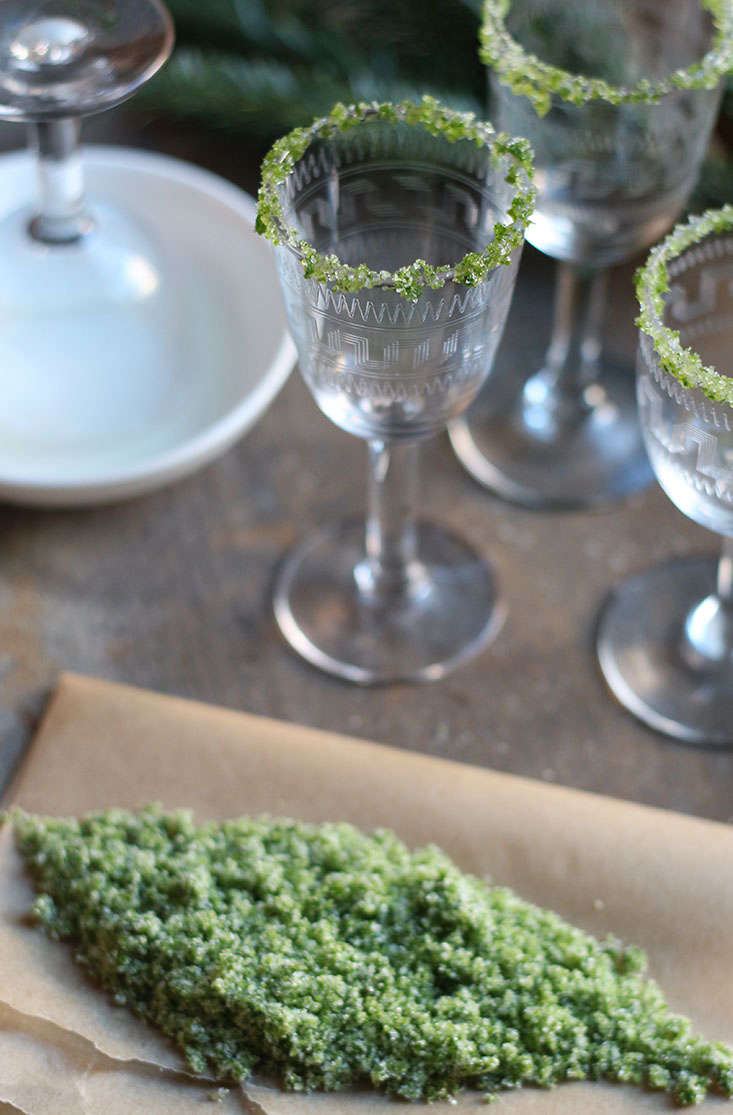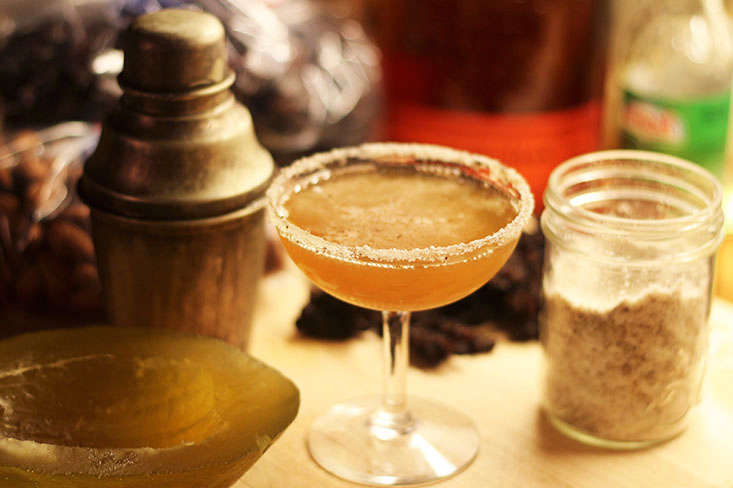Last year, when I took down our Christmas tree after the holidays, I cut its branches to lay on top of my outdoor pots, thinking I was making the most of the evergreen tree by adding a mulch to the winter garden. As I was cutting, I was surprised by how much fragrance was left in the needles. So I carried a few branches into the kitchen. And that is how a new holiday tradition began.
Photography by Marie Viljoen.
Above: Before you cast off your Christmas tree or wreath after the holidays, read on about how to use the needles to perfume holiday fare. A little goes a long way.
Above: Most firs sold on sidewalks and Christmas lots are scented: Fraser, balsam, and Douglas fir have intensely fragrant needles.
In Brooklyn recently, I collected some fresh branches of organically grown balsam and Fraser fir from Windswept Farm, which operates wreath and tree stands all over the city (they sell maple syrup, too). The branches—trimmings from trees cut for customers—are usually given away free, though I would be happy to pay a few dollars for the distinctive flavor that I preserve to use all year, back at home.
Above: Fir sugar is a wildly versatile and easy way to catch the magical scent of Christmas.
Above: After rinsing and drying the plucked needles, combine a quarter cup of needles with a half cup of sugar and process in a spice grinder until very smooth and bright green. (Wash the grinder with hot water immediately after use or its blades will remain gummed up with resin.) After grinding, transfer the highly aromatic fir sugar concentrate to a large bowl and add another cup of sugar to dilute it, mixing it well with your hands, before bottling and storing. You can make fir salt in exactly the same way. The color will fade with time but the scent will remain strong.
Above: How to use fir sugar? Dip the rims of cocktail glasses first into lemon juice and then gently into fir sugar, letting the rims dry for 10 minutes before filling the glasses. (To clean these sugared glasses stand them upside down on a plate with a little warm water until the sugar loosens.)
Above: Viscously cold vodka pairs very well with fir, and sends your party in a Nordic direction. Even more intense is a vodka in which you have macerated fir needles for a week, before straining.
Above: Substitute fir sugar in a butter cookie recipe for a holiday snack with a whisper of the North. Add a dab of the green sugar to the frosting, too. And use fir sugar instead of the regular sugar and vanilla to make a surprising ice cream topped with chocolate sauce.
Above: For a winter counterpart to summer’s mint julep, shake up 2 teaspoons of fir sugar with 1 teaspoon of lemon juice and 4 fluid ounces of bourbon. Pour and sip while you bake this year’s fruitcakes.
Above: Staying with cold climate traditions, use fir sugar to make gravlax, a quick-cure of salmon that is ready to eat after three days. I use a juniper sugar as well as a fir salt for this cure.
Fir and Juniper Gravlax
Serves 8 as an appetizer
I made this gravlax with a side of salmon from my annual share of wild-caught red salmon from the Iliamna Fish Company.
First Cure
1 side of salmon, approximately 1.5 pounds, trimmed to fit a baking dish or roasting tray
3 tablespoons fir sugar
1 tablespoon fir salt
3 tablespoons vodka
Second Cure
2 tablespoons fir sugar
1 tablespoon juniper sugar
2 tablespoons fir salt
3 tablespoons vodka
Sprinkle some of the First Cure salt and sugar in the bottom of a large baking dish. Place the side of salmon in the dish, skin side down. Sprinkle the rest of the salt and sugar over the salmon, pressing it gently onto the flesh. Pour the vodka over and then tilt the dish to catch any liquid that collects and spoon that back over the fish. Cover the salmon with a double piece of parchment paper, and then with plastic wrap, weight it with a wooden board board or a dish that fits within the dish, and then a really heavy book (I use use an Oxford English Reference Dictionary) or heavy cans, and transfer to the refrigerator.
After 24 hours, remove the salmon from the refrigerator and uncover. Turn the salmon so that it is skin-side up. Cover again, replace the weight and return to the refrigerator for a second night.
On the third day, remove the salmon from the dish and gently rinse off the First Cure. Pat dry with paper towels. Wipe the dish, and sprinkle the Second Cure’s fresh fir sugar, juniper sugar, and salt over the bottom of the dish. Place the salmon on top, skin side down. Sprinkle the remaining sugars and salt over the fish, press them onto the flesh, and pour over the fresh 3 tablespoons of vodka. Cover the fish with new parchment paper, then with plastic wrap, and replace the board and the weight. Send it back into the refrigerator for its third night.
On day four the salmon will be perfectly cured and ready to eat. Place the salmon on a board and slice it as finely as you can on an angle, using a very sharp knife. Have a set of good tweezers handy so that you can pull out the pin bones that will be exposed as you slice (I find it easier to remove them now than before the fish is cured). Serve the gravlax on fingers of thinly sliced dense brown bread with a slathering of very good sweet cream butter.
Goes well with vodka. Of course.
Happy holidays!
For more of our favorite festive recipes, see:
- DIY: A 5-Ingredient Holiday Cocktail Party.
- A Simple Edible Gift: Chocolate Bark 3 Ways.
- DIY: A Menu for Christmas Morning.






















Have a Question or Comment About This Post?
Join the conversation (4)